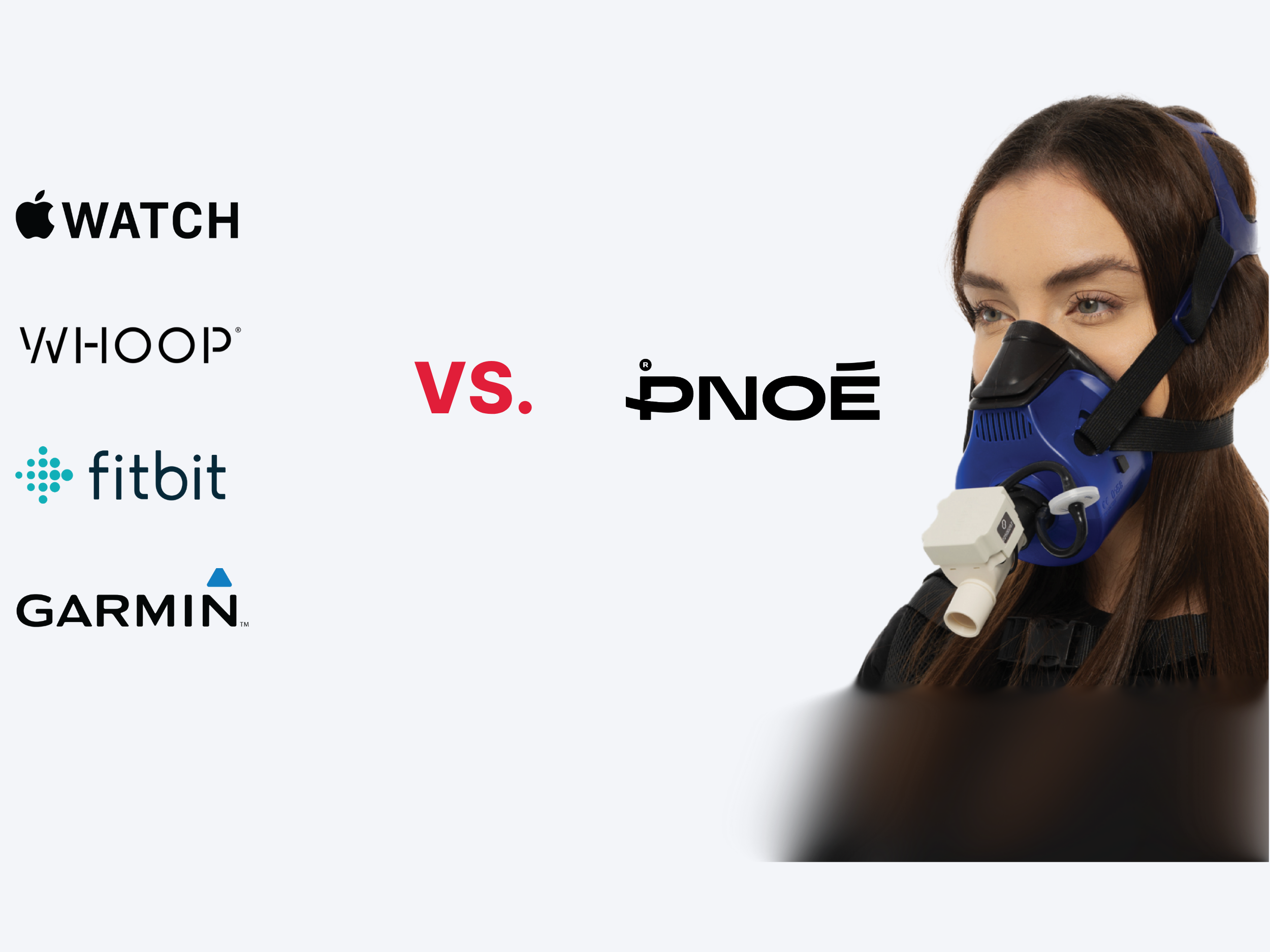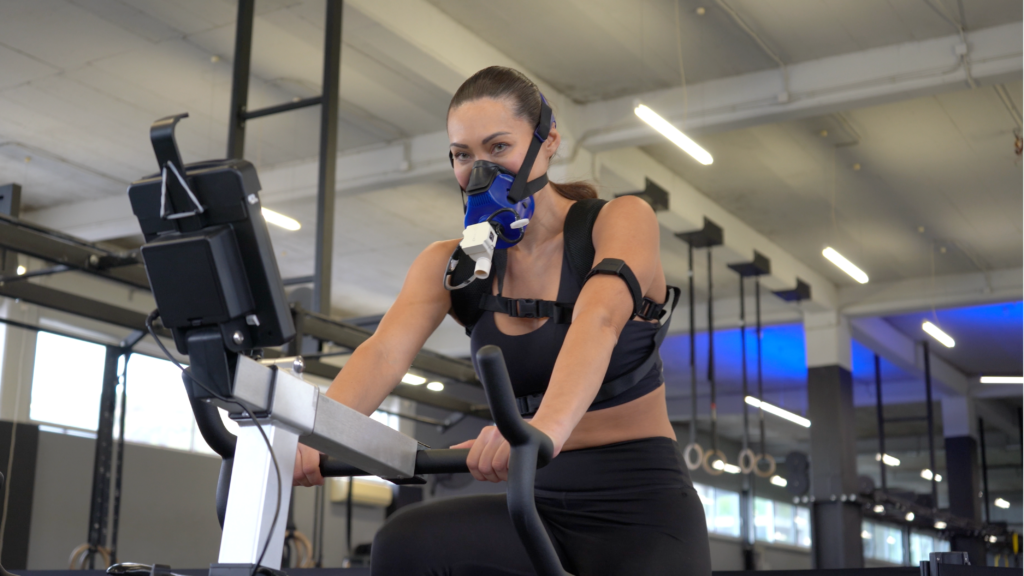In today’s fitness-obsessed culture, wearables like Apple Watch, Garmin, Fitbit, and WHOOP dominate the landscape. They promise accurate heart rate monitoring, sleep analysis, VO2 Max tracking, and even stress detection. But can they really deliver actionable insights—or are we relying on data that’s more guesswork than science?
This post dives deep into the accuracy of today’s top wearables and compares their data with the gold standard of metabolic testing: PNOĒ.
The Core Metrics Everyone Wants to Track
Modern wearables typically measure:
- Heart rate
- Calories burned
- Sleep patterns
- Steps & activity
- VO2 Max estimates
- Stress and recovery
These data points help users monitor fitness progress, recovery, and general well-being. But there’s an important distinction: wearables use algorithms and estimation, while clinical-grade testing like PNOĒ uses direct measurement and physiological analysis.
How the Top Wearables Stack Up
Apple Watch (Series 8 & Ultra)
- Strengths: Great user interface, HR accuracy at rest and moderate activity, integrates well with Apple Health.
- Limitations: VO2 Max is estimated using HR and activity data—not direct testing. Known to underperform at high intensity.
- Accuracy: Moderate for heart rate; weak for metabolic metrics.
Garmin (Forerunner & Fenix Series)
- Strengths: Excellent for endurance athletes, strong HR and VO2 Max estimates via Firstbeat analytics.
- Limitations: VO2 Max still based on prediction models; not personalized beyond heart rate dynamics.
- Accuracy: High relative accuracy in HR zones; metabolic estimates not individualized.
Fitbit (Sense, Versa 4)
- Strengths: Sleep tracking and stress metrics using HRV and SpO₂; user-friendly.
- Limitations: Caloric burn and VO2 Max are based on generic user profiles; weak for performance analytics.
- Accuracy: Adequate for general wellness, not training precision.
WHOOP (Strap 4.0 & 3.0)
- Strengths: Prioritizes recovery, strain, and HRV; built for serious lifestyle tracking.
- Limitations: WHOOP provides estimated VO2 Max based on physiological data, activity, and demographic information, but it does not directly measure VO2 Max with clinical-grade accuracy, like PNOĒ. The data is based on proprietary algorithms that are very accurate but still fall short of direct measurement accuracy. WHOOP’s estimation may not be as precise for individuals with unique metabolic conditions or extreme fitness levels.
- Accuracy: Best for recovery cues; lacks physiological depth.
Enter PNOĒ: Clinical-Grade Testing With Actionable Precision
PNOĒ is a breath-based metabolic analysis system that measures 23 biomarkers including:
- VO2 Max (measured, not estimated)
- Resting Metabolic Rate (RMR)
- Fat and carb burn efficiency
- Oxygen utilization across lungs, heart, and mitochondria
Unlike wearables, PNOĒ doesn’t guess. It measures your actual physiology in real time, using breath-by-breath data to map out limitations, training zones, and metabolic imbalances.
Example: Where a smartwatch might say you’re burning 500 calories, PNOĒ can tell you what percentage came from fat vs carbs, your real caloric burn, and why that burn pattern occurred.
Why Estimations Fall Short
Most wearables rely on population-based algorithms. That means they’re comparing your heart rate and activity to a general database—not your unique physiology. This creates margin for error, especially for those with:
- Metabolic conditions
- Cardiorespiratory issues
- Variability in fitness levels
- Non-average body composition
PNOĒ eliminates this guesswork by testing how your lungs, heart, and cells actually function, creating a 360° profile of your metabolic health.
The Verdict: Wearables ≠ Diagnostics
Wearables are powerful tracking companions, but they’re not diagnostic tools. They offer convenient estimations, but when it comes to real insights—especially for VO2 Max tracking, metabolic rate, or fat-burning potential—PNOĒ stands unmatched.
If you’re serious about results, PNOĒ gives you the data under the hood—not just numbers on your wrist.
Error/Deviation Table
Sources & References
Scientific Reports: Smartwatch Accuracy Study (2024)
Frontiers: PNOĒ Metabolic Cart Validation (2019)
JMIR: Fitbit Systematic Review (2022)
Sensors: WHOOP vs ECG/PSG (2022)
AIM7: Wearables Accuracy Review (2024)
A Validation of Six Wearable Devices for Estimating Sleep, Heart Rate and Heart Rate Variability in Healthy Adults – Sensors, 2022.
A performance validation of six commercial wrist-worn wearable sleep-tracking devices for sleep stage scoring compared to polysomnography – Sleep Advances, 2025.
Wrist-worn devices for the measurement of heart rate and energy expenditure: A validation study for the Apple Watch 6, Polar Vantage V and Fitbit Sense – European Journal of Sport Science, 2023.
Validity of Apple Watch, Garmin Forerunner® 935 and GENEActiv for estimating energy expenditure during close quarter battle training in Special Forces soldiers – European Journal of Sport Science, 2024.
Investigating the accuracy of Apple Watch VO₂ max measurements: A validation study – PLOS ONE, 2025.
Validation of Aerobic Capacity (VO₂max) and Pulse Oximetry in Wearable Technology – Sensors, 2025.
Keeping Pace with Wearables: A Living Umbrella Review of Systematic Reviews Evaluating the Accuracy of Consumer Wearable Technologies in Health Measurement – Sports Medicine, 2024.
Metabolic Health




